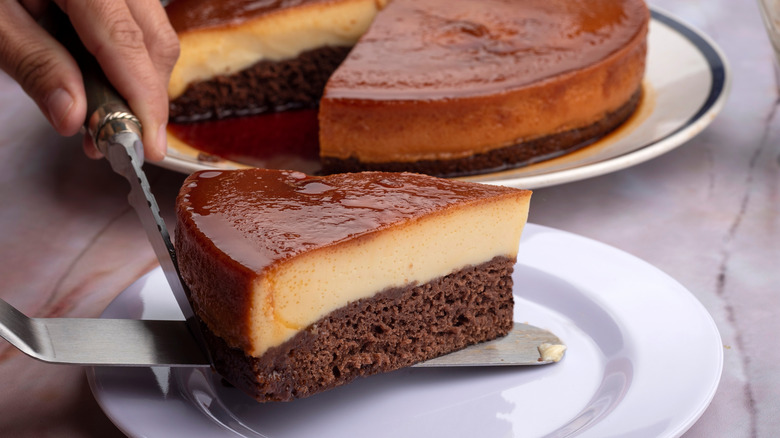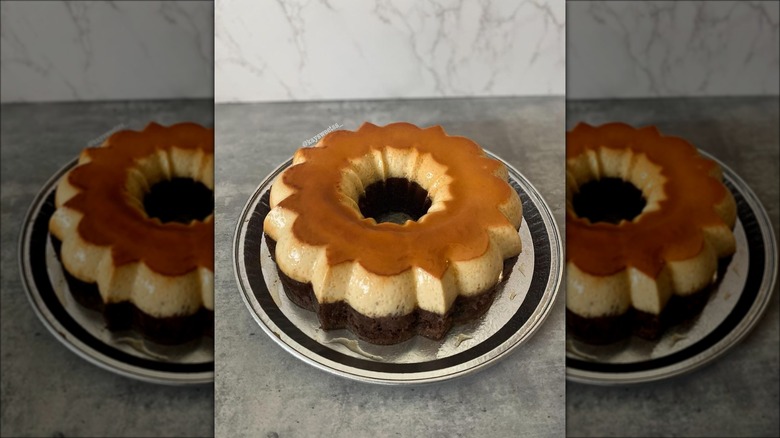Mexico's Impossible Cake Deliciously Defies The Logic Of Baking
Sometimes desserts have confusing names. Baked Alaska has no real connection to Alaska. There are no hummingbirds (thank goodness) in Hummingbird Cake. And Buckle Cake bears no resemblance whatsoever to a belt buckle. Mexico's aptly named Impossible Cake, however, has a moniker that's spot on. Also known as a chocoflan, the tasty confection defies logic. Here's the mystery: The layers invert while the cake is cooking. The batter goes into the oven in a bundt pan holding a layer of chocolate cake batter covered by a layer of flan (some recipes call for lining the pan with a layer of caramel before adding the cake batter). When it comes out of the oven, magically, the chocolate cake layer is on the top.
It's fun to imagine there's a bit of pixie dust involved in the shifting layers, but there is a scientific reason for the phenomenon. It all comes down to gravity. In a nutshell, chocolate cake batter is denser than flan. Uncooked, it's dense enough to support a layer of flan, but as the batter cooks and rises, the cake layer becomes lighter by volume than the flan, rising to the top in the process. When the bundt pan holding the cooked cake is turned upside down onto a plate, you end up with a confection of chocolate cake, topped by flan, and — if you include the caramel layer — it's all wrapped up in a sweet coating.
The murky history of Impossible Cake
Even celebrity chef, restaurateur, TV host, and cookbook author Rick Bayless is impressed. Known for his creative takes on traditional Mexican cuisine, Bayless first tasted Impossible Cake at a market in Mexico. "It blew me away," he recalls on his website, adding, "I quickly went on the hunt for a recipe." While tracking down an authentic recipe proved an easy task, Bayless was stymied when it came to tracing the roots of Mexican Impossible Cake. He's not alone. The recorded history of chocoflan is sketchy at best, especially considering that there are other versions of this dessert popular across Latin American cultures, such as flancocho in Spain. While stories of its genesis vary, there seems to be one common thread suggesting it's a fusion of French crème caramel, as well as Spanish flan, and Mexican chocolate cake that developed in the early- to mid-19th century.
While chocoflan is easy to make — Bayless says it's within anyone's reach — you'll stack the odds higher in your favor by following a few tips. According to Bayless, it's perfectly okay to go with store-bought cajeta (caramel sauce made with goat's milk), but it can be a little bit hard to find. Your best bet is probably a Mexican grocery store. Look for brands like Corazon and Coronado. (If you come up empty-handed, dulce de leche is more commonly available and makes a good substitute.) Soften, but don't overheat, the cajeta before use. Pour the flan over an inverted spoon so it gently covers the cake batter. And finally, let it cool — an hour on the counter and another three or four hours in the refrigerator — before attempting to unmold the finished cake.

